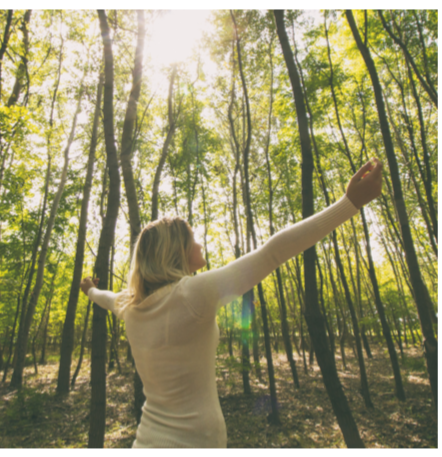Rochelle Capers, Staff Writer
The summer season has arrived, and our minds turn to fun, freedom, and frolicking as we soak up those rays. While it’s great to enjoy the season, we have a year-round responsibility to protect our skin from the adverse effects of exposure to sunlight. We have a timely reminder of the official UV Safety Awareness Month of July, annually. It focuses on raising our awareness and the need to take the necessary steps for the protection of ourselves and our families.
According to the Centers for Disease Control (CDC), we should all protect ourselves “from the sun with shade, a shirt, or sunblock (SPF 15+) all year long.” Damaging effects caused by unprotected sun exposure to the skin and eyes particularly can often cause premature aging of the skin, skin cancer, vision problems, damage to eyes, as well as suppression of the immune system.
According to Skin Cancer Facts and Stats from the Skin Cancer Foundation, more than 3.3 million people in the US in 2012 were treated for 5.4 million cases of non-melanoma skin cancer. Of this number about 90% were related to ultraviolet exposure from the sun. The annual cost of treatment for this cancer is about $4.8 billion. It is believed that around 90% of skin aging is also attributable to the sun.
The CDC explicitly cautions against over-exposure to the sun. They suggest some ways to minimize exposure:
• Seek Shade
• Cover up by wearing:
• Wide-brimmed hat
• Shades/Sunglasses
• Loose Fitting Clothing
• Avoid Sunlamps and tanning beds – a tan is often evidence that your skin is damaged by UV Rays
• Apply Sunscreen SPF 15 or higher
The World Health Organization [WHO] recommends that the best practice is to limit sun exposure – which is exposure to ultraviolet rays – between the hours of 12 noon and 4 pm. This advisory is especially important during the hot summer days. Spending 10-15 minutes in the sunlight within the hours of 9 am and 10 am, 2-3 times per week is considered optimal. This amount of exposure will be the most beneficial for absorbing healthy rays that provide the essential nutrient, Vitamin D. During these times the sun isn’t too intense. Add to this, the air quality is fresher in the morning. Remember, this still leaves ample time to enjoy outdoor activities to the max after 4 pm each day; just in time for the end of the workday for millions of families.
What are some of the tangible benefits of complying with the stated guidelines?
• Fresh air in the lungs means a rich supply of oxygen – Cancer can’t live in a well-oxygenated body
• You get the opportunity for Deep Outdoor Breathing
• Sunlight means an essential dose of Vitamin D directly from the best source on the planet. This vitamin is essential for strong bones; it helps the body adequately use the calcium it receives from the diet. More and more, research shares that Vitamin D is important to protect against a host of health problems.
• A great opportunity for outdoor exercises like walking, light cardio, stretching, and a variety of other fun activities.
Growing scientific evidence has implicated vitamin D deficiency in a multitude of chronic conditions, including type I diabetes, rheumatoid arthritis, hypertension, cardiovascular disease, and several common deadly cancers, among others. WebMD suggests taking extra care with your Vitamin D level if you fall within any of these groups;
a) if you experience bone pain and/or muscle weakness
b) If you follow a strict vegan diet
c) Limit or avoid sun exposure)
d) Suffer from milk allergies
e) You are non-Hispanic African American in the US
Of 4962 participants interviewed by the National Health and Nutrition Examination Survey (NHANES) 2011-2012, significant differences in vitamin D levels were seen in non-Hispanic African Americans who made up 39.3% of the vitamin D deficient population. To a lesser extent, significant differences were also seen in Mexican-Americans. It is advisable to get tested if you suspect you fall into any of the above categories.
Getting sufficient Vitamin D is important to our total well-being. It just means taking prescribed steps to protect our health and that of our families when we are out and about. Children are especially vulnerable to over-exposure to the sun. In as little as 15 minutes, ultraviolet rays from the sun could prove too much for a child. It is important to understand that it could take up to 12 hours before you detect actual SUN-BURN. Even when it is cloudy, you can be overexposed to the rays because clouds Do Not Block UV Rays; they filter them and sometimes, only slightly.
When taking children outside or allowing them playtime outdoors, plan for their sustained protection. Keep a handy supply of protection with you, such as Sunscreen SPF 15+ or more. Keep it in your car, your bag, yours or your child’s backpack. Just a few sunburns can really damage skin and increase cancer risks. Plan to use a sunscreen every 2 hours. This includes after swimming even if your choice of product states it is waterproof.
In a nutshell, make your skin and eyes a major area of priority for protection.
Be Aware! Protect yourself, your children, and your family. Make healthy sun exposure a priority every day. Stay properly hydrated and enjoy! Your body will thank you!

